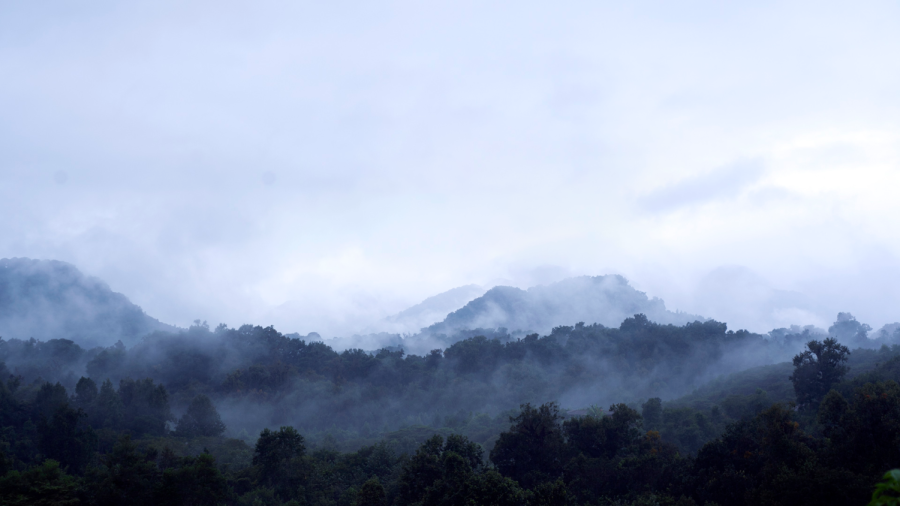On Kanopy: The everyday guardians of ‘The Cloud Forest’
Insightful documentary highlights one of Mexico’s breathtaking rainforests
October 5, 2021
Content warning: contains brief depictions of animal slaughter.
It’s a beautiful gift in a film when you can sit back and see the beauty of nature play out on screen. The documentary, “The Cloud Forest,” carries with it a deeply cinematic presence that depicts a community living a harmonious, modest life in the nearby rainforest. Through intimate photography and sincere conversations, we are welcomed into their idyllic world.
“Bosque de Niebla,” as the film is known in Spanish, welcomes us into a place that teaches care and respect to one another and to the rainforest they call home. Animals and people live in a world that is almost Edenic in nature. The cloud forest is situated in the mountains of Huatusco, Veracruz, Mexico, and is said to be one of few remaining in the region.
The film opens with a wide shot of a far-off mountain lit by the sun. In the foreground are lush trees amidst a dense valley that reaches off to the mountain in the distance. Several intimate shots of the animals that inhabit the rainforest begin to establish this theme of the guardian that stays with the film up to its end. The various inhabitants of the village each do their part to enrich their community.
The film’s cinematography, while restrained and sparse, frames the community beautifully. Birdsong, wind, rain and a recurring shepherd’s song score the film. Depictions of typical family affairs and chatter at work show that this community is not far from our own.
The community in the film utilizes a farming practice referred to as “Permaculture” where land is structured to allow for careful, controlled sustainability. The adopters of the term, which took shape in the late 1970s, aligned the practice with the indigenous knowledge of farming techniques and as an avoidance of the industrial agricultural method prevalent in the West. The film shows this in practice many times as a communal effort between the villagers. We get brief insights into their world in conversations by the river about wanting to become a doctor, to a parent – through her tears – reassuring her daughter’s happiness.
While I would have liked some additional insight into broader permaculture techniques, this was not that type of documentary – and that’s fine. There are several lingering conversations in the film that allude to both the cause of their forest’s predicament and the future of it and its community, while also visualizing a richer society. What is shown is a local community’s steadfast resilience and commitment towards positive change.
In continued observance of Hispanic Heritage Month, we want to highlight important films from Hispanic artists. This film can be viewed on Kanopy’s website, which all UTSA students may access through the library’s database page.












